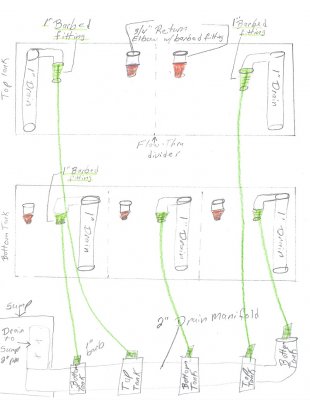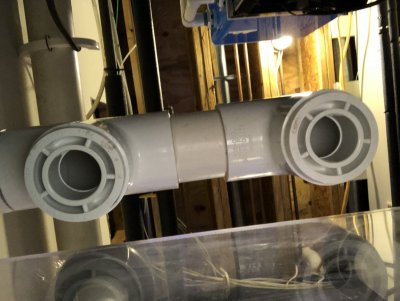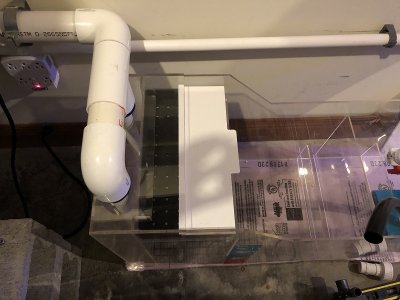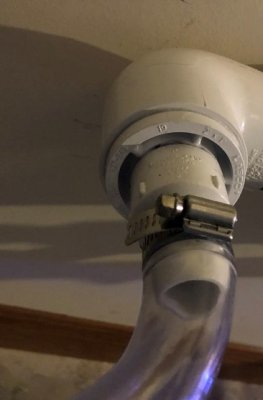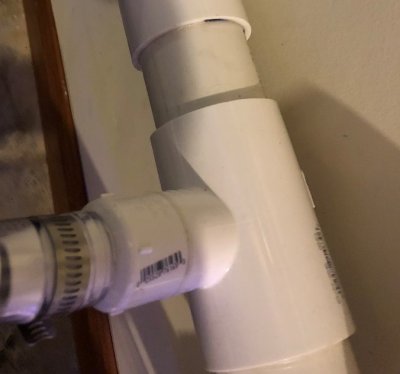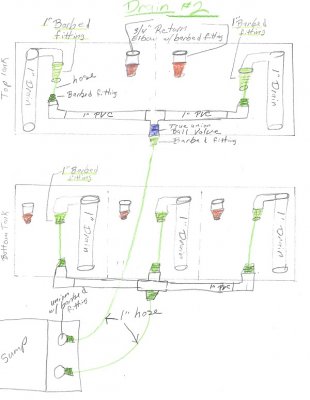I want to redo my qt system to reduce the number of QT tanks I have to maintain. (Seams like I always got 4 or 5 different qt's running at once.) I got these tanks from a lfs that was redoing their whole system. I need help with the best way to plumb them. I would like to plumb two separate tanks to one sump with one return pump if possible. I would like to be able to run just one or both tanks as needed. I don't want to plumb the two tank together if possible, but more like two separate tanks with one sump. What is the best way to do this. The tanks will be stacked one of top of the other also. The tanks are pretty much identical except one have 2 compartment and the other has 3. The compartments have flow-thru dividers. To help reduce cost a little, I was planning on using the hard plumbed parts that are already attached if possible. (See photos) The return lines are 1/2" and the drains are 1". The return pump is a mag drive 12, which has a 1/2" outlet.
Here is a picture of the 3 compartment when in the store. Top and bottom drains in each compartment with one return in each compartment.

A closer view of inside on one compartment.
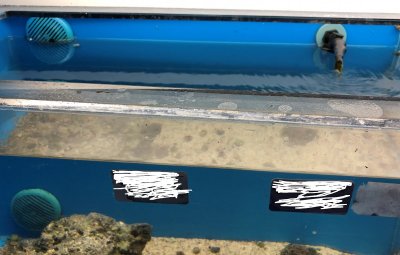
back side of tanks.
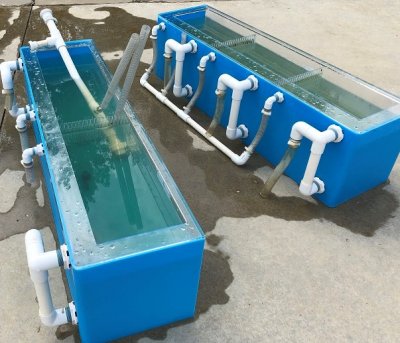
Sump that I got used.
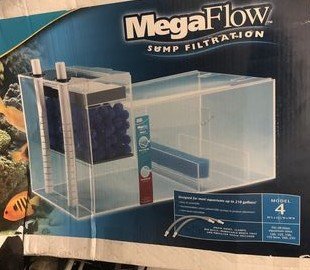
I realize there will be more than one way to plumb these so looking for options on best way to do this. Thanks in advance for your help.
Here is a picture of the 3 compartment when in the store. Top and bottom drains in each compartment with one return in each compartment.

A closer view of inside on one compartment.

back side of tanks.

Sump that I got used.

I realize there will be more than one way to plumb these so looking for options on best way to do this. Thanks in advance for your help.







